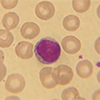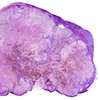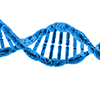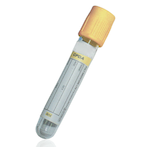Fructosamine
Specimen Volume
1 mL bloodSpecimen Transport
First class postSample Preparation
Turnaround Time
1 daySample Processing In Laboratory
UsualSample Stability
3 days at 15 - 25 °C, 2 weeks at 2 - 8 °C, 2 months at -15 to -25 °C
General Information
Fructosamine is used to monitor glycaemic control in patients with diabetes if HbA1c is not appropriate due to abnormalities in haemoglobin or conditions that alter the amount of haemoglobin or its turnover such as:
• Any condition that affects the life span of haemoglobin for example haemoglobinopathies or haemolytic anaemia. When the lifespan of RBCs in circulation is shortened, the A1c result is falsely low and is an unreliable measurement of a person's average glucose over time.
• Patients that have undergone a recent transfusion
• Closer monitoring during pregnancy
Fructosamine measurements should not be used for the diagnosis of diabetes mellitus.
Since the half-life of proteins such as albumin is short (2–3 weeks) compared to haemoglobin (6-8 weeks), fructosamine is a more responsive marker to changes in glycaemic control compared to glycated haemoglobin HbA1c and can therefore be used to alert physicians to deteriorating diabetic control before changes in HbA1c occur.
Patient Preparation
Fructosamine should not be used in patients with proteinuria as it is reduced due to abnormally high urinary albumin excretion.
Notes
Fructosamine is a measurement of glycated protein, mainly albumin. In cases of chronic hyperglycaemia, glucose molecules combine with proteins in the blood such as albumin and haemoglobin, in a process called glycation. The amount of glycated protein is increased in diabetes mellitus, contributing to the long-term complications of the disease. The fructosamine concentration provides a record of the average amount of glucose that has been present in the blood over the preceding 2-3 weeks.
Reference Range
200-285 umol/L
Specifications
-
EQA Status:
NEQAS
- EQAS Scheme: Yes








